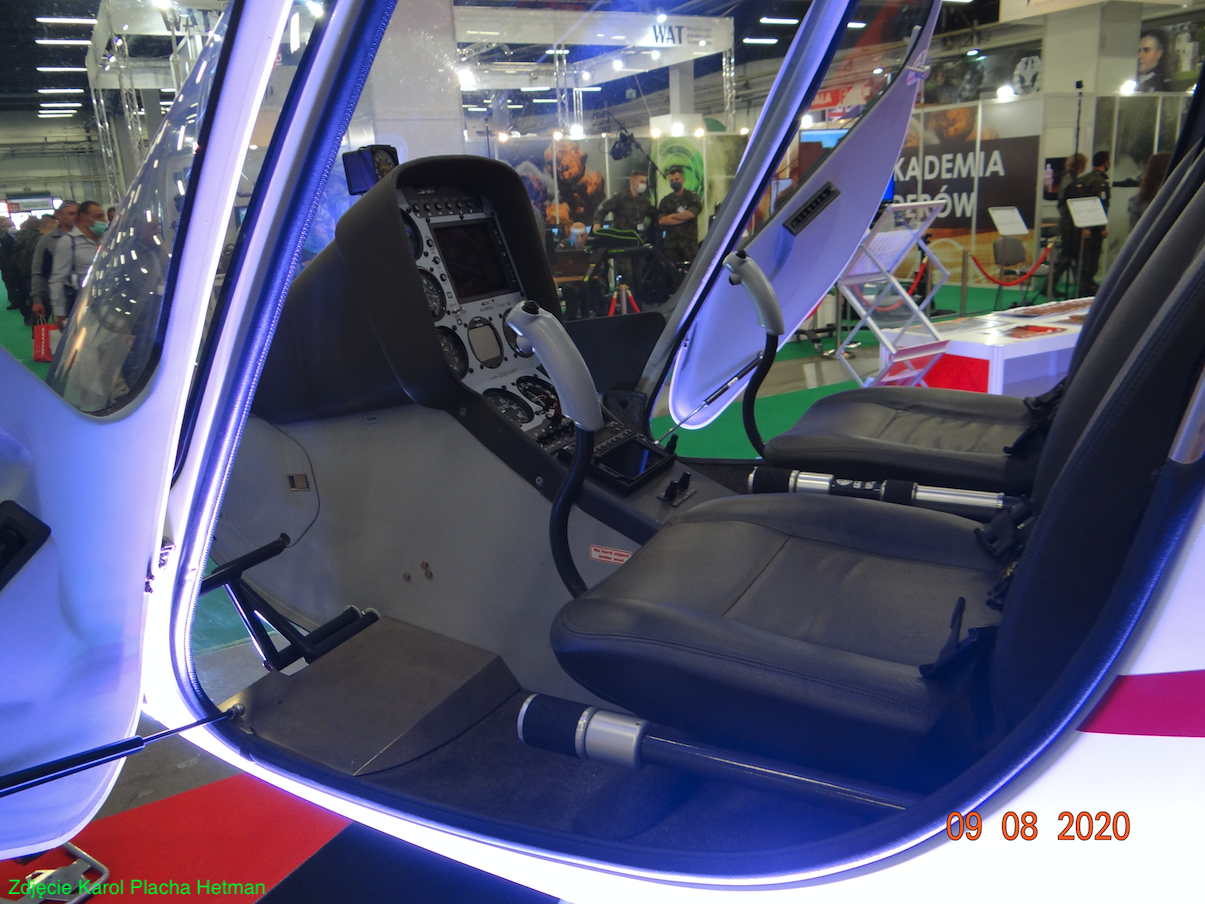Warszawa 2018-09-21
Hélicoptères Guimbal Cabri G2.
History.
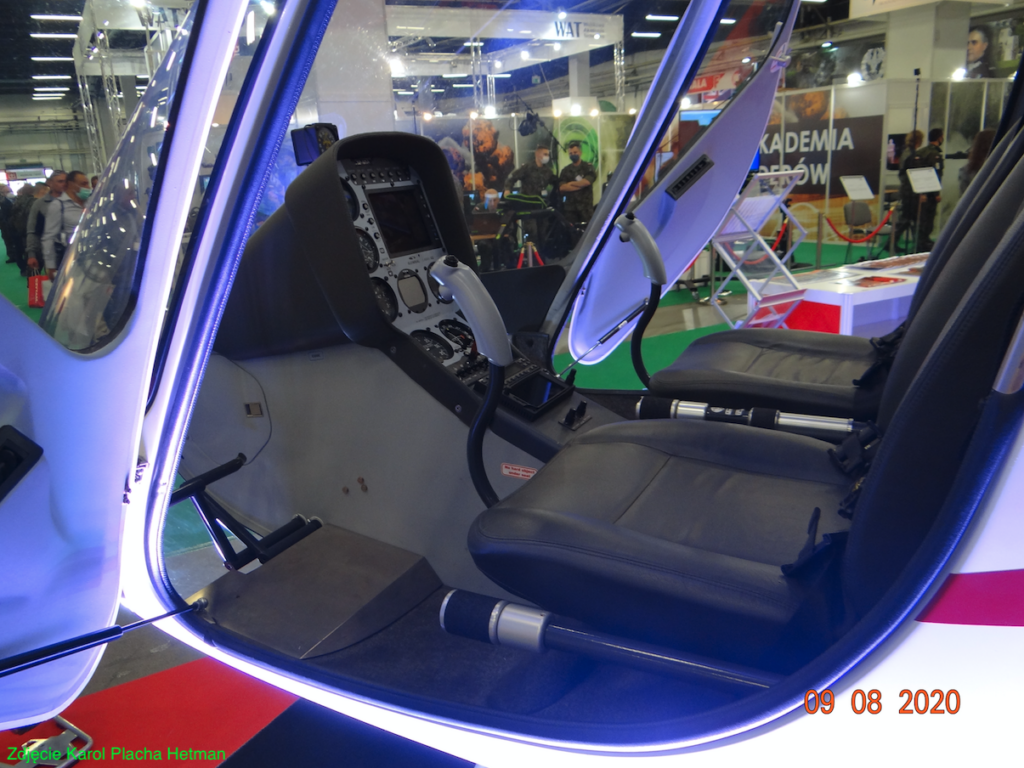
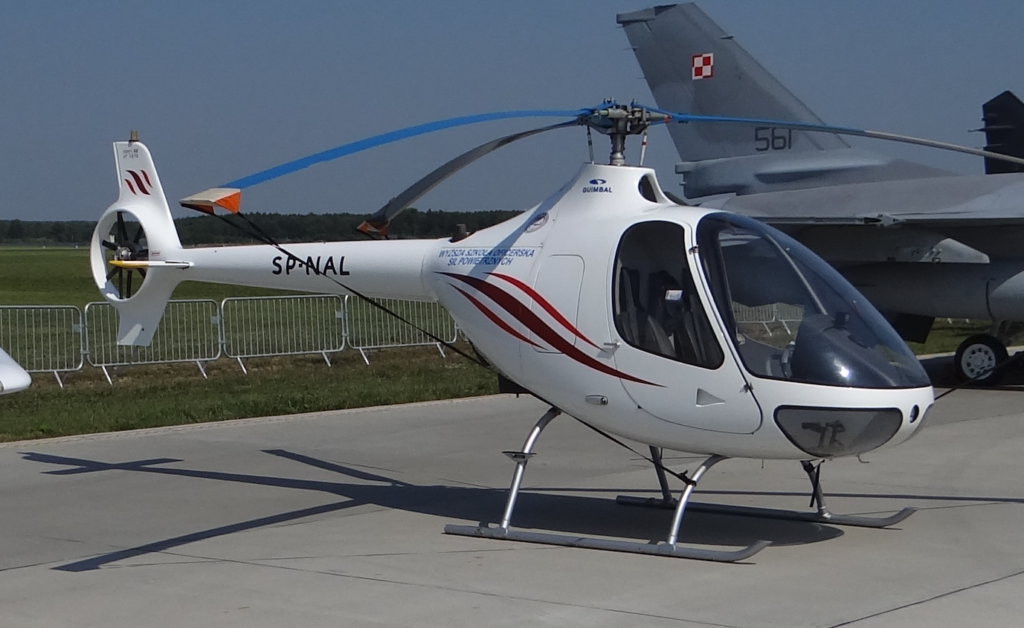
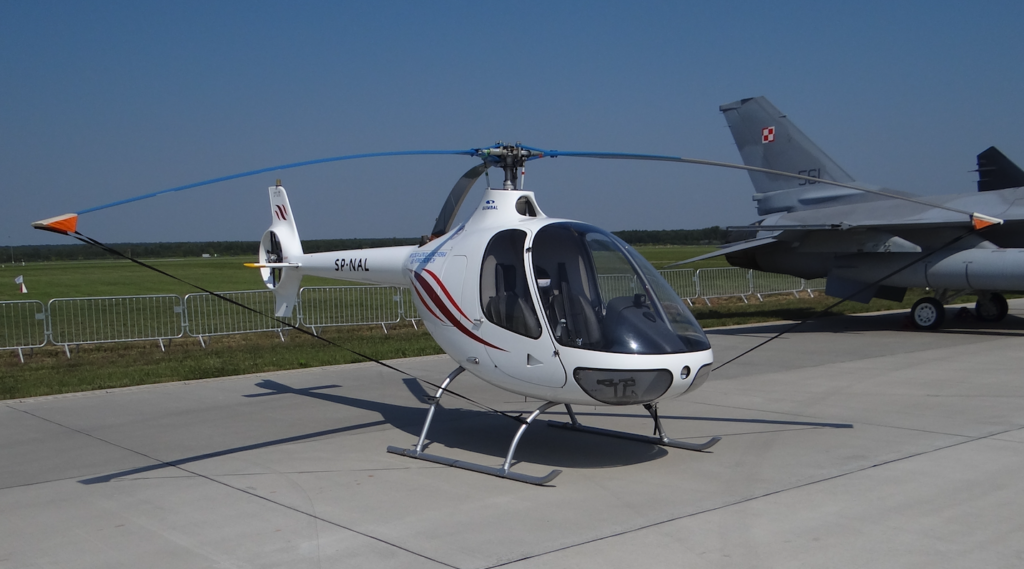
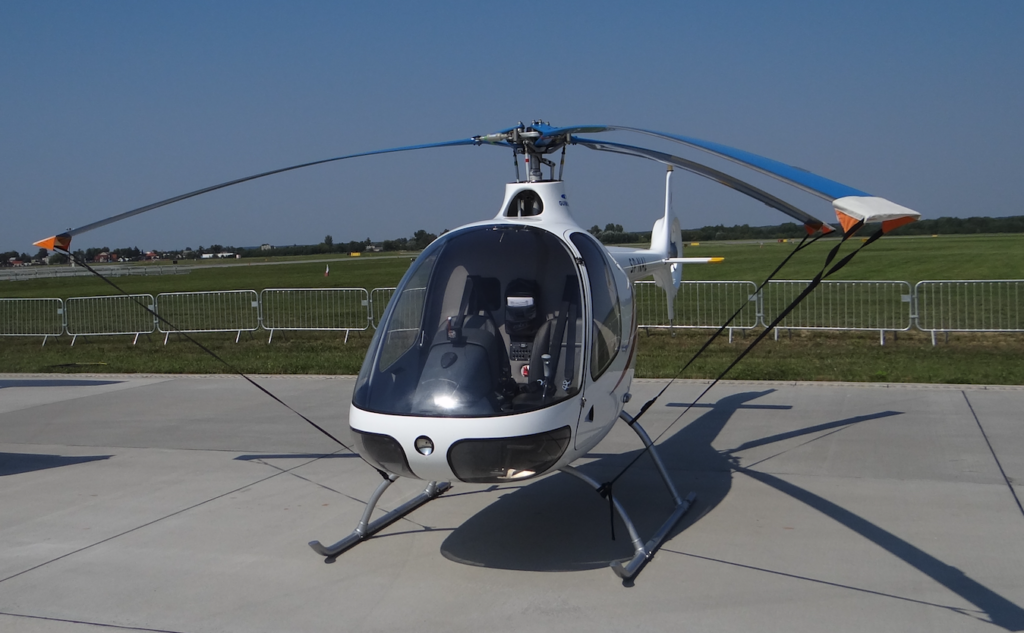
The Guimbal Cabri G2 is a light two-seat helicopter manufactured by Hélicoptères Guimbal, powered by a piston engine. It was designed by Bruno Guimbal, a former Eurocopter engineer. The beginnings of work on the helicopter date back to the 80s. The demonstrator made its first flight in 1992.
In the 1980s, engineer Bruno Guimbal, working at Eurocopter on the Eurocopter AS365 Dauphin and Eurocopter EC120 Colibri helicopters, decided to independently develop a two-seat helicopter. The constructor Bruno Guimbal decided to build a small helicopter that would have the solutions of large helicopters, and at the same time would be cheap. Fuselage made of composite. Tail rotor replaced with Fenestron. The new helicopter was to have modern avionics and a dashboard.
In 2000, engineer Bruno Guimbal left Eurocopter to found a new company, Hélicoptères Guimbal, to certify the Cabri G2 and bring the type into commercial production. For this purpose, research and production facilities have been set up at Aix-en-Provence Aerodrome in France.
On March 31, 2005, the helicopter made its first flight. In 2007, the Cabri G2 helicopter received the European certificate. In February 2015, the Cabri G2 received type certification from the Federal Aviation Administration (FAA). Serial production started in 2005. By 2015, 44 copies of the helicopter were built. By 2018, 220 helicopters had been built. The ordered helicopter was delivered to the customer after 12 months. The price of a helicopter in 2018 was $400,000 – $450,000. A used helicopter, which is 10 years old, costs about PLN 1,000,000. The Cabri G2 has been the world’s best-selling two-seat helicopter since 2015. In total, the fleet of 150 helicopters has already flown more than 100,000 hours and confirmed the highest level of safety of the Cabri G2.
Since 2003, the company has been working on an unmanned version of the Cabri G2 helicopter.
In 2006, the Cabri G2 set three world records in the class under 500 kg: maximum unladen height – 6,658 m; time of ascent to an altitude of 3,000 m – 6 minutes and 42 seconds; climb time to an altitude of 6,000 m – 22 minutes 6 seconds.
Cabri G2 in Poland.
On October 28, 2013, the Academic Aviation Training Center (AOSzL), operating at the Polish Air Force Academy (WSOSP) in Dęblin, received 2 new Cabri G2 helicopters, and in 2014, ordered three additional helicopters of this type.
Helicopter design.
The Cabri G2 helicopter is mainly used for flight training, but also for other missions such as filming and photography, air taxi and sightseeing tours.
The Cabri G2 helicopter is a two-seat lightweight machine. It has a three-blade impeller. The main rotor is a fully articulated rotor. The rear rotor is Fenestron type. As with most French helicopters, the main rotor blades rotate to the left. Composite rotor blades are damage-resistant and have an unlimited service life.
The fuselage has a damage-resistant, all-composite construction. The composite reduces weight and maintenance requirements while increasing strength.
The use of Fenestron has been credited with making the Cabri G2 noticeably quieter than the competing rotorcraft. This solution increases the safety of people at the airport.
The Cabri G2 uses a skid undercarriage system. Unusually, the skids are attached to the hull with elastomer mounts rather than bolted directly to the fuselage.
The Cabri G2 uses a side-by-side cab layout; for the pilot and passenger. This layout is also ideal for training purposes, which is the intended role for this helicopter. Equipment options available include air conditioning, various avionics configurations, a moving map display, a GPS display, a cargo hook, a float landing gear and several maintenance and repair tool packages.
Drive.
Cabri G2 is powered by a single 180 hp (134 kW) Lycoming O-360 engine, which has a continuous power of 145 hp (108 kW), a maximum power of 160 hp (119 kW) for 5 minutes. The engine incorporates an electronic ignition system which, once started, protects against over-revving and has high reliability. The engine speed is regulated electronically.
Lycoming’s history began in 1845 as the Demorest Manufacturing Company, manufacturing sewing machines and bicycles in Williamsport, Pennsylvania. The company has always indicated that big changes are coming because the automotive industry is developing. In 1907, the company was reclassified as the Lycoming Foundry and Machine Company. Lycoming developed and built automobile engines until the end of the Great World War. Company owners inspired by Charles Lindberg’s transatlantic flight, from 1929 Lycoming began developing aero engines. The first Lycoming R-680, a 200 hp 9-cylinder piston engine, rolled off the assembly line and set a new standard in general aviation. Piston engines continue to evolve today, with Lycoming developing advanced technologies.
Cabri G2 Data T-T:
Pilot and passenger crew (controls are for the left and right seats). Length 6.31 m (20 ft 8 in). Rotor diameter 7.2 m (23 ft 7 in). Width 1.24 m (4 ft 1 in). Height 2.37 m (7 ft 9 in). Gross weight 700 kg (1,543 lb). Powerplant Lycoming O-360-J2A, 108 kW (145 hp). Top speed 185 km/h (115 mph). Cruising speed 166 km/h (104 mph). Range 700 km (380 nautical miles). Flight time 5.8 hours. Maximum ceiling 3,963 m (13,000 ft).
Tally.
On October 28, 2013, the Academic Aviation Training Center (AOSzL), operating at the Polish Air Force Academy (WSOSP) in Dęblin, received 2 new Cabri G2 helicopters, and in 2014, ordered three additional helicopters of this type.
Written by Karol Placha Hetman

